Parrots are among the most vibrant and intelligent birds in the animal kingdom, and among them, some stand out for their impressive size. The largest parrots in the world include species like the Hyacinth Macaw, which can reach lengths of up to 3.3 feet and weigh as much as 4 pounds. These stunning blue birds are not only notable for their size but also for their remarkable strength and social behavior. Other contenders for the title of largest parrots include the Green-winged Macaw and the Scarlet Macaw, both known for their striking plumage and playful personalities. The diversity in size and coloration among these birds captivates birdwatchers and enthusiasts alike, making them a popular subject for study and admiration.
In addition to their size, the largest parrots in the world exhibit fascinating behaviors and adaptability in their natural habitats, primarily found in tropical and subtropical regions. These parrots are not only visually stunning but also highly intelligent, capable of mimicking human speech and solving complex problems. However, many of these species face threats from habitat loss and illegal trapping for the pet trade, prompting conservation efforts to protect their populations. Recognizing the importance of these magnificent birds and their habitats is essential for ensuring their survival for future generations.
Top 10 Largest Parrots in the World
1. Hyacinth Macaw (Anodorhynchus hyacinthinus)
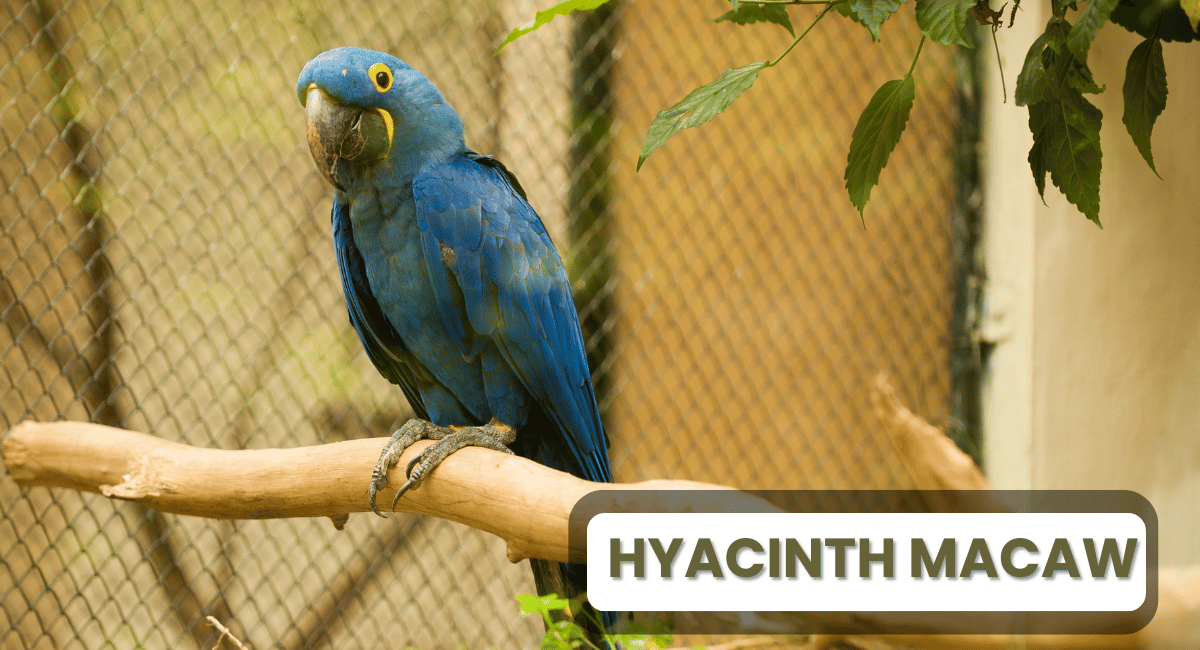
The Hyacinth Macaw (Anodorhynchus hyacinthinus) holds the title of the largest parrots in the world, renowned for its striking cobalt-blue feathers and impressive wingspan that can reach up to 4 feet. Native to the tropical forests of South America, particularly in Brazil, Bolivia, and Paraguay, this magnificent bird is not only the largest parrot but also one of the most visually stunning. Its powerful beak is designed to crack open tough nuts, which forms a significant part of its diet, alongside fruits and seeds. The Hyacinth Macaw’s social nature often leads it to be seen in pairs or small groups, adding to its charm and allure.
Despite its grandeur, the Hyacinth Macaw faces threats from habitat loss and illegal trapping for the pet trade, resulting in a declining population. Conservation efforts are underway to protect this stunning species and its natural habitats. As one of the largest parrots in the world, the Hyacinth Macaw represents not only the beauty of avian diversity but also the urgent need for wildlife preservation. Enthusiasts and bird watchers alike are captivated by its majestic presence, making it a symbol of the rich biodiversity that must be safeguarded for future generations.
2. Green-Winged Macaw (Ara chloropterus)
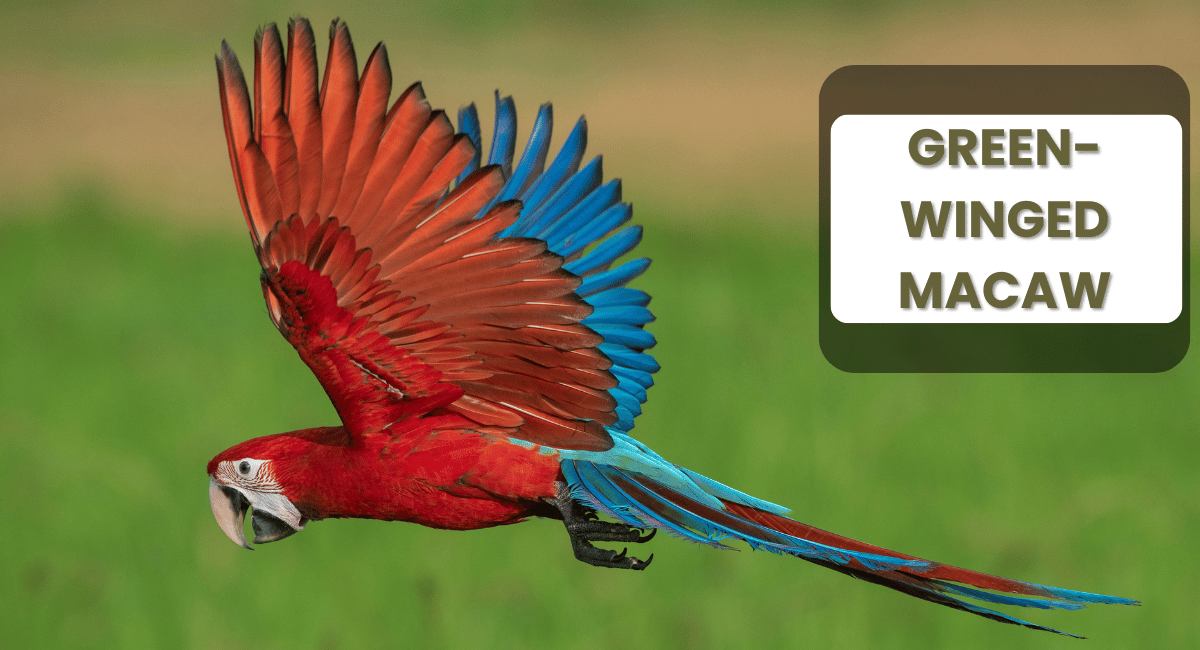
The Green-Winged Macaw (Ara chloropterus) is one of the largest parrots in the world, renowned for its vibrant plumage and impressive size. Native to the rainforests of Central and South America, these macaws boast a striking combination of green, red, and blue feathers that make them easily recognizable. Adults typically measure between 32 to 40 inches in length, with wingspans that can reach up to 50 inches. Their strong, curved beaks are perfectly adapted for cracking open nuts and seeds, which form a significant part of their diet. This species is not only visually stunning but also possesses a loud, expressive vocalization that echoes through their tropical habitats.
In addition to their physical beauty, Green-Winged Macaws are known for their social behavior and intelligence. These largest parrots in the world often live in pairs or small family groups, engaging in playful interactions and forming strong bonds with their companions. Unfortunately, habitat destruction and the illegal pet trade have led to a decline in their populations, making conservation efforts essential for their survival. Observing the Green-Winged Macaw in the wild is a breathtaking experience, showcasing the beauty and complexity of avian life. As one of the largest members of the parrot family, the Green-Winged Macaw serves as a symbol of the vibrant ecosystems they inhabit, reminding us of the importance of protecting these incredible birds and their natural environments.
3. Scarlet Macaw (Ara macao)
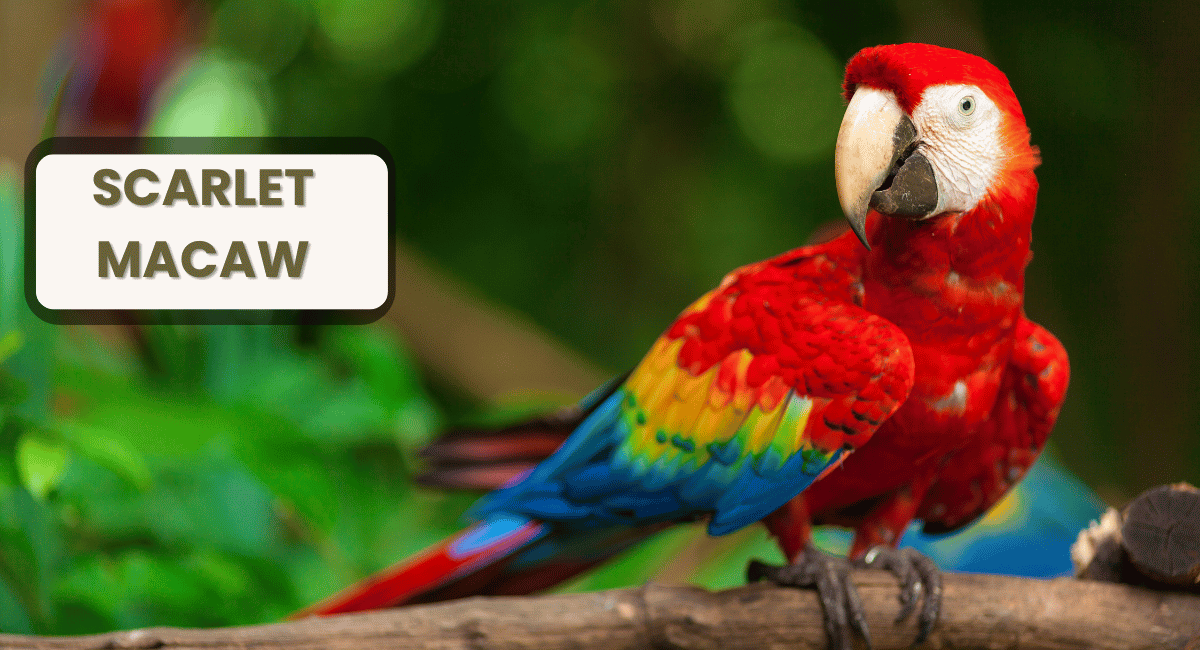
The Scarlet Macaw (Ara macao) is a strikingly beautiful bird that holds a prominent place among the largest parrots in the world. With its vibrant plumage featuring bright red, yellow, and blue feathers, this parrot captures the attention of bird enthusiasts and casual observers alike. Native to the tropical rainforests of Central and South America, the Scarlet Macaw thrives in diverse habitats, including lowland forests, savannas, and mangroves. These large parrots typically measure around 30 inches in length, with a wingspan that can exceed 3 feet, making them one of the most recognizable members of the parrot family.
Scarlet Macaws are not only known for their stunning appearance but also for their intelligence and social behavior. They are highly social creatures, often seen in pairs or small flocks, and are known for their loud, raucous calls that echo through their forest homes. As one of the largest parrots in the world, they have a varied diet that includes fruits, nuts, and seeds, which they expertly crack open with their strong beaks. Unfortunately, habitat loss and the illegal pet trade have threatened their populations, leading to conservation efforts aimed at protecting their natural habitats. Observing a Scarlet Macaw in the wild is a breathtaking experience that highlights the beauty and diversity of avian life.
4. Blue and Gold Macaw (Ara ararauna)
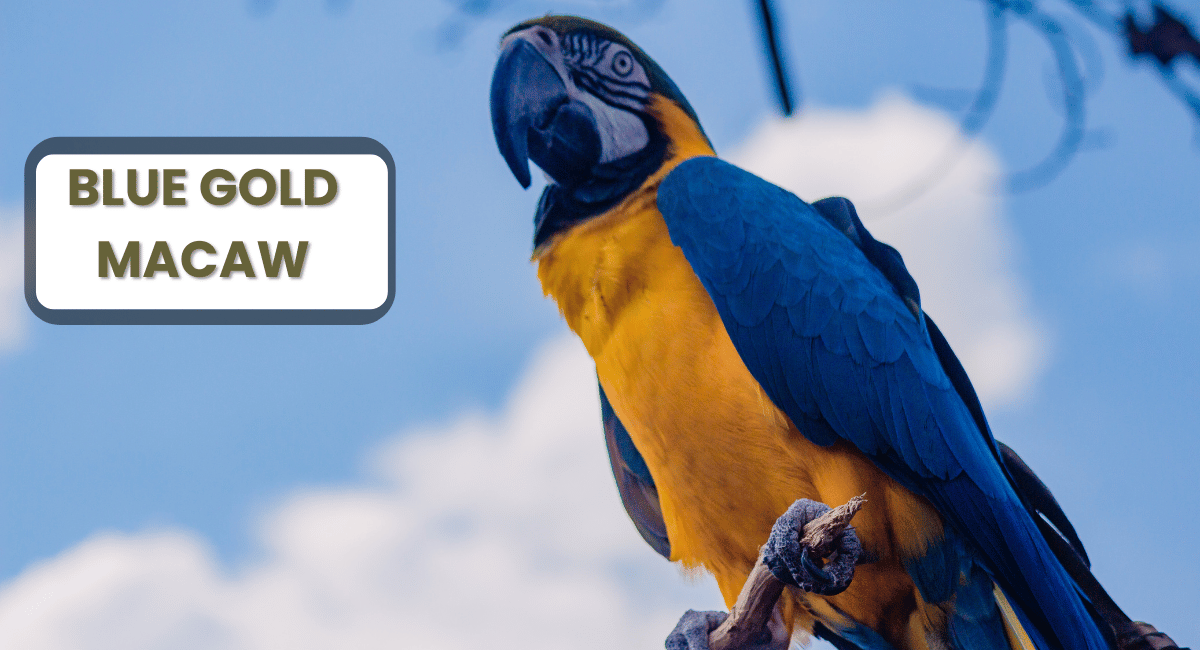
The Blue and Gold Macaw (Ara ararauna) is one of the most colourful Animals and popular species among the largest parrots in the world. Known for its vibrant blue feathers and bright yellow underparts, this macaw is not only visually stunning but also highly intelligent. Native to the rainforests of Central and South America, the Blue and Gold Macaw thrives in a variety of habitats, including tropical forests and open woodlands. These social birds often travel in pairs or small flocks, showcasing their playful nature and strong bonds with one another. With a wingspan that can reach up to three feet and a length of about 30 inches, they are truly one of the most impressive members of the parrot family.
In addition to their beauty, Blue and Gold Macaws are known for their vocal abilities, often mimicking sounds and human speech with remarkable clarity. As one of the largest parrots in the world, they require ample space to fly and engage in social interactions, making them a challenge to care for in captivity. Unfortunately, habitat loss and illegal trapping have led to a decline in their population, prompting conservation efforts to protect these magnificent birds. With their striking appearance and engaging personalities, Blue and Gold Macaws continue to captivate the hearts of bird enthusiasts and nature lovers alike, reminding us of the importance of preserving their natural habitats for future generations.
5. Great Green Macaw (Ara ambiguus)
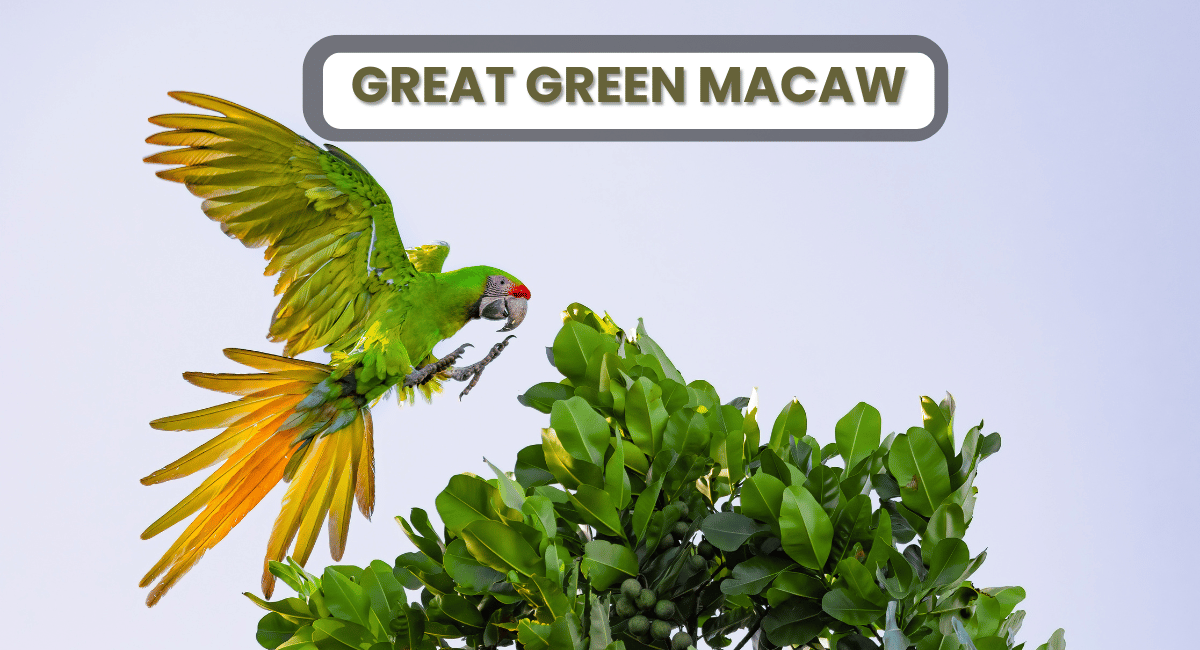
6. Black Palm Cockatoo (Probosciger aterrimus)

The Black Palm Cockatoo (Probosciger aterrimus) is one of the most striking species among the largest parrots in the world. Native to the rainforests of New Guinea and nearby islands, this remarkable bird is easily recognizable due to its stunning black plumage and impressive crest, which can be raised when the bird is excited or alarmed. Typically reaching lengths of up to 24 inches, the Black Palm Cockatoo has a robust body and a strong, curved beak designed for cracking open tough seeds and nuts. Its striking appearance and large size have made it a favorite among bird enthusiasts and a symbol of avian beauty.
In addition to its stunning looks, the Black Palm Cockatoo is known for its complex vocalizations and social behavior. These birds are often seen in pairs or small family groups, displaying intricate bonding rituals and engaging in playful interactions. As one of the largest parrots in the world, they are also known for their intelligence and problem-solving abilities, making them fascinating subjects for research and observation. Unfortunately, habitat loss and illegal trapping for the pet trade threaten their populations, highlighting the need for conservation efforts to protect this magnificent species and its natural habitat. The Black Palm Cockatoo is not only a symbol of beauty but also a reminder of the importance of preserving biodiversity in our ecosystems.
7. Umbrella Cockatoo (Cacatua sulcata)
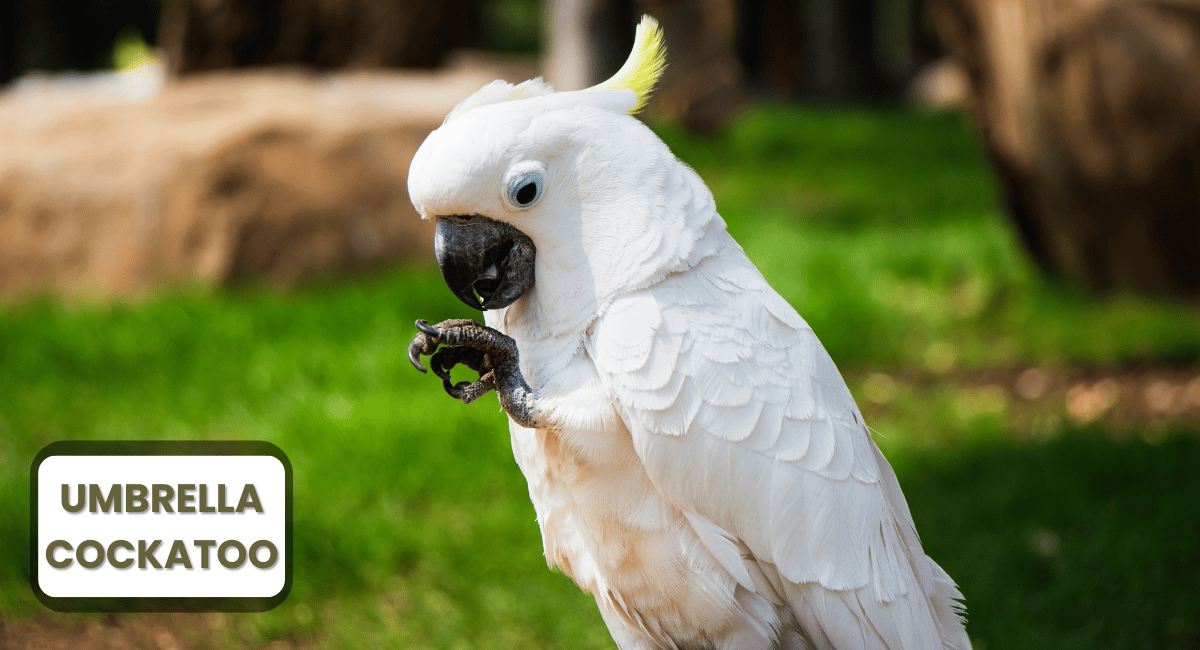
The Umbrella Cockatoo (Cacatua sulcata) is one of the most enchanting members of the largest parrots in the world, renowned for its striking appearance and playful personality. Native to the tropical forests of Indonesia, this bird is easily recognized by its impressive crest that resembles an umbrella when fully displayed. Umbrella Cockatoos can reach lengths of up to 18 inches and have a robust build, making them not only one of the most beautiful but also one of the larger parrot species. Their plumage is predominantly white, adorned with hints of yellow under the wings and tail, which adds to their stunning visual appeal.
Despite their captivating looks, Umbrella Cockatoos face significant threats in the wild due to habitat loss and illegal trapping for the pet trade. As one of the largest parrots in the world, they possess not only physical beauty but also intelligence and sociability, making them a popular choice among bird enthusiasts. These cockatoos are known for their affectionate nature and strong bonds with their owners, often exhibiting playful behaviors and vocalizations. Conservation efforts are vital to protect their natural habitats and ensure the survival of these magnificent birds, allowing future generations to admire their grace and charm in the wild.
8. Lesser Sulphur-Crested Cockatoo (Cacatua sulphurea)
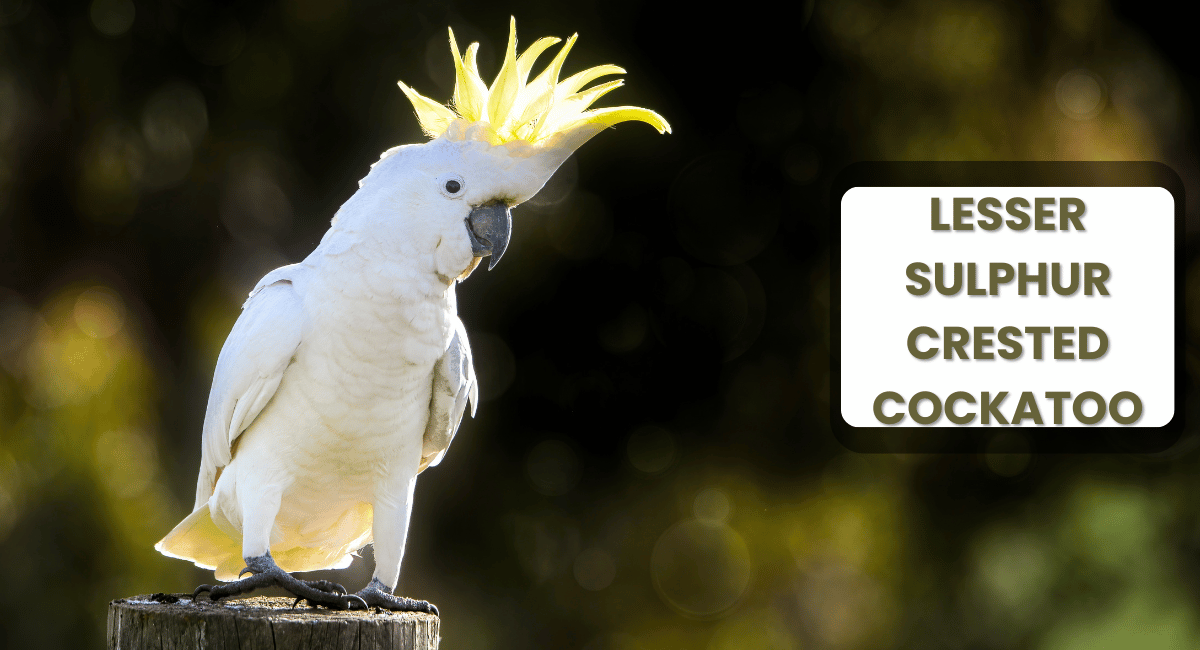
The Lesser Sulphur-Crested Cockatoo (Cacatua sulphurea) is a stunning bird that captivates enthusiasts with its vibrant plumage and playful personality. While not one of the largest parrots in the world, this species still boasts an impressive size, measuring around 12 to 14 inches in length. Native to the islands of Indonesia, the Lesser Sulphur-Crested Cockatoo is characterized by its striking yellow crest and soft white feathers, which add to its allure. This charming parrot is known for its sociable nature and intelligence, making it a popular choice among bird lovers and pet owners alike.
Despite its beauty, the Lesser Sulphur-Crested Cockatoo faces significant threats in the wild due to habitat loss and the illegal pet trade. Conservation efforts are crucial for preserving their populations and natural habitats. While it may not rank among the largest parrots in the world, its vibrant personality and stunning appearance ensure that the Lesser Sulphur-Crested Cockatoo holds a special place in the hearts of those who admire these fascinating birds. Protecting this species and its environment is essential to ensure that future generations can enjoy the splendor of this remarkable parrot.
9. Amazon Parrots (Amazona spp.)
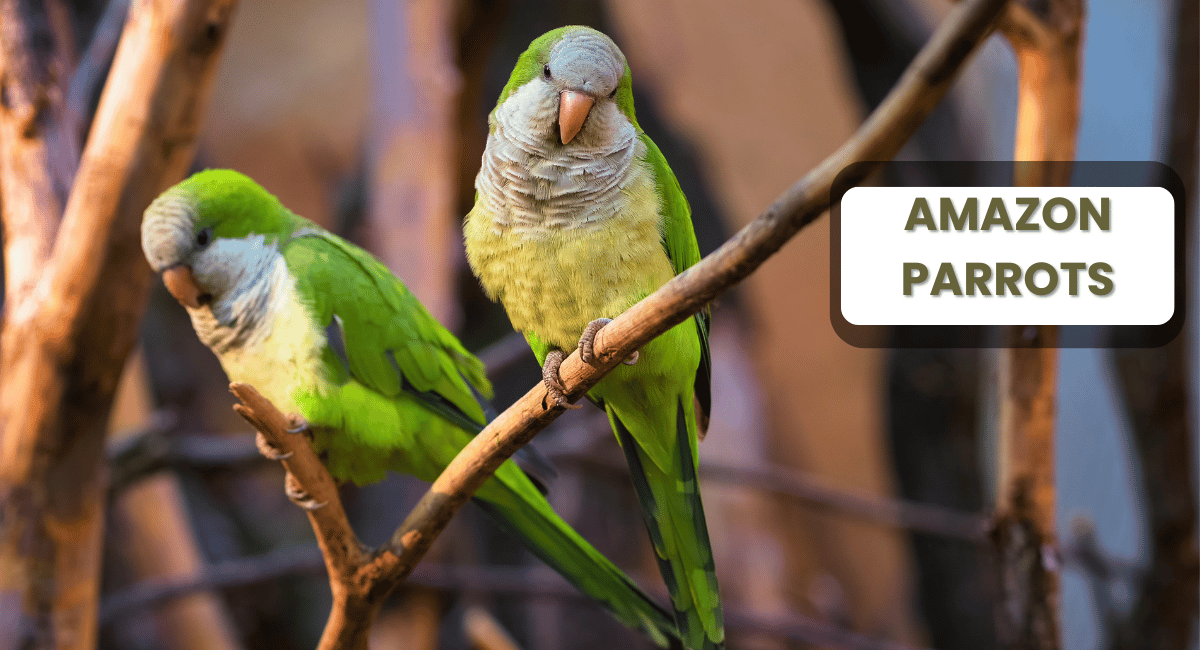
Amazon parrots (Amazona spp.) are among the most vibrant and sociable birds found in the rainforests of Central and South America. Known for their striking plumage and impressive vocal abilities, these parrots are a favorite among bird enthusiasts and pet owners alike. While they may not hold the title of the largest parrots in the world, they are notable for their size, intelligence, and engaging personalities. Adult Amazon parrots typically measure between 10 to 18 inches in length, with some species displaying a rich variety of colors, including greens, yellows, and blues, which help them blend seamlessly into their lush forest habitats.
In addition to their captivating appearance, Amazon parrots are known for their strong social bonds and ability to mimic human speech, making them highly interactive companions. Their diet primarily consists of fruits, nuts, and seeds, which they forage for in their natural habitats. While they may not be the largest parrots in the world, the charm and intelligence of Amazon parrots have made them a popular choice for aviculture. However, their populations face threats from habitat loss and illegal trapping for the pet trade. Conservation efforts are crucial to ensuring that these beautiful birds continue to thrive in the wild, preserving their rich diversity and ecological importance in their native ecosystems.
10. Quaker Parrot (Myiopsitta monachus)

The Quaker Parrot, also known as the Monk Parakeet (Myiopsitta monachus), is a small but lively bird native to South America. While they may not be among the largest parrots in the world, they are famous for their engaging personalities and social nature. Typically measuring about 11 to 12 inches in length, Quaker Parrots are easily recognized by their vibrant green plumage, grayish breast, and charming facial expressions. Their vocal abilities and knack for mimicking sounds have made them popular pets, and they are known to form strong bonds with their human companions.
Despite their small size, Quaker Parrots have a big presence in their native habitats, often seen in large flocks that can create impressive colonies. They are skilled builders, constructing intricate nests from twigs and other materials, often in trees or on utility poles. While they may not be classified among the largest parrots in the world, their remarkable adaptability and social behavior contribute to their growing popularity. Conservation efforts are important for this species, as they face challenges from habitat loss and illegal trapping. Observing these charming birds provides a delightful glimpse into the vibrant avian world, showcasing the beauty and diversity of parrots beyond just size.



